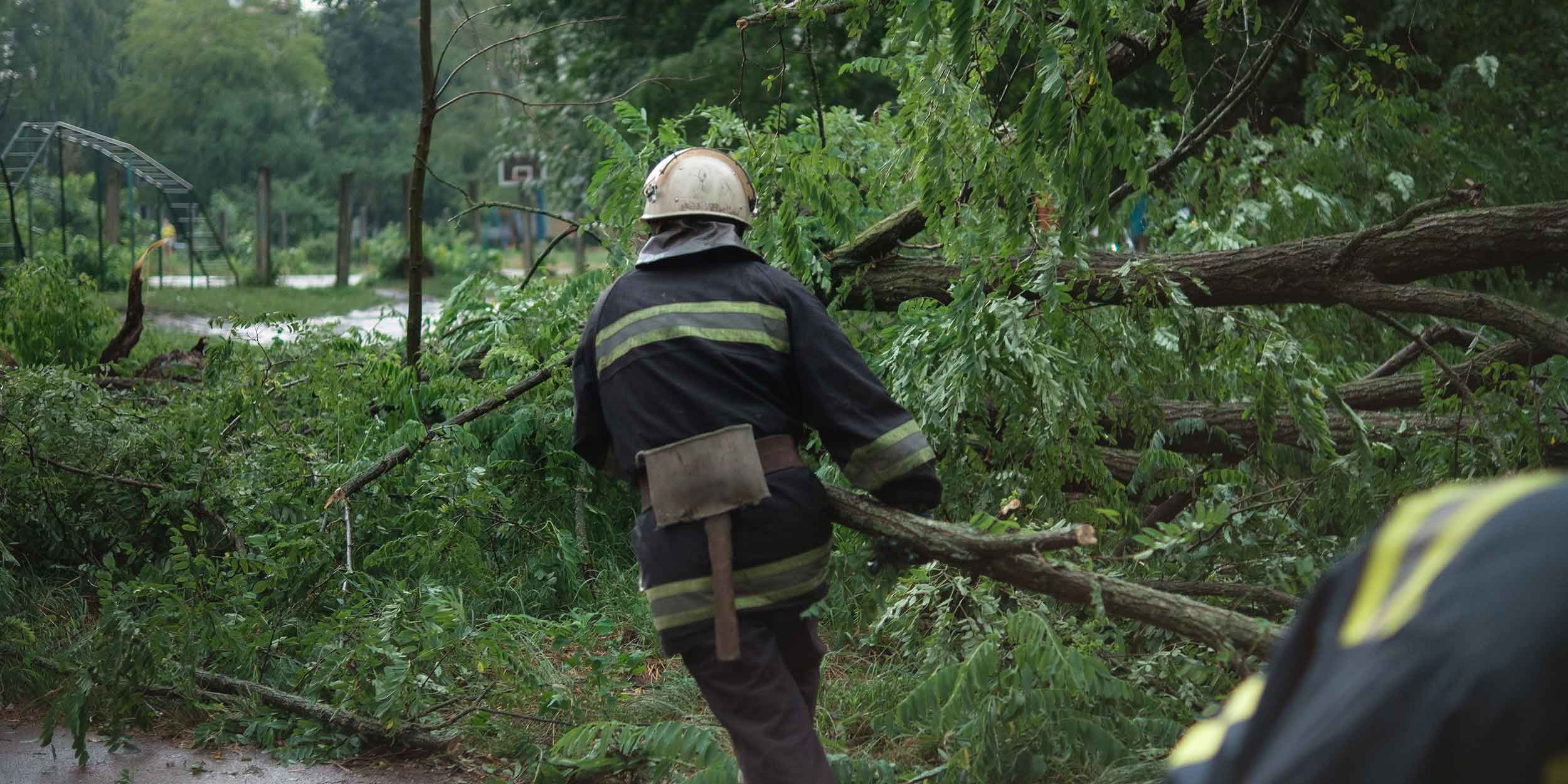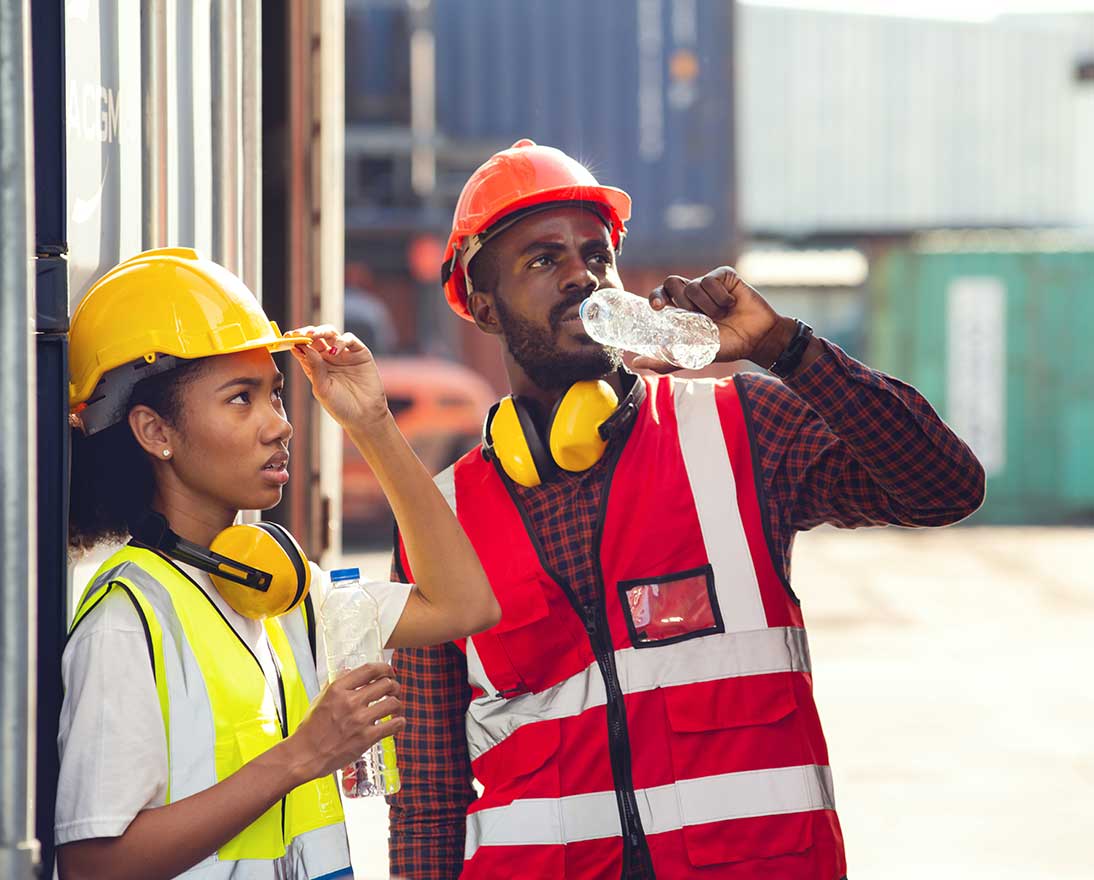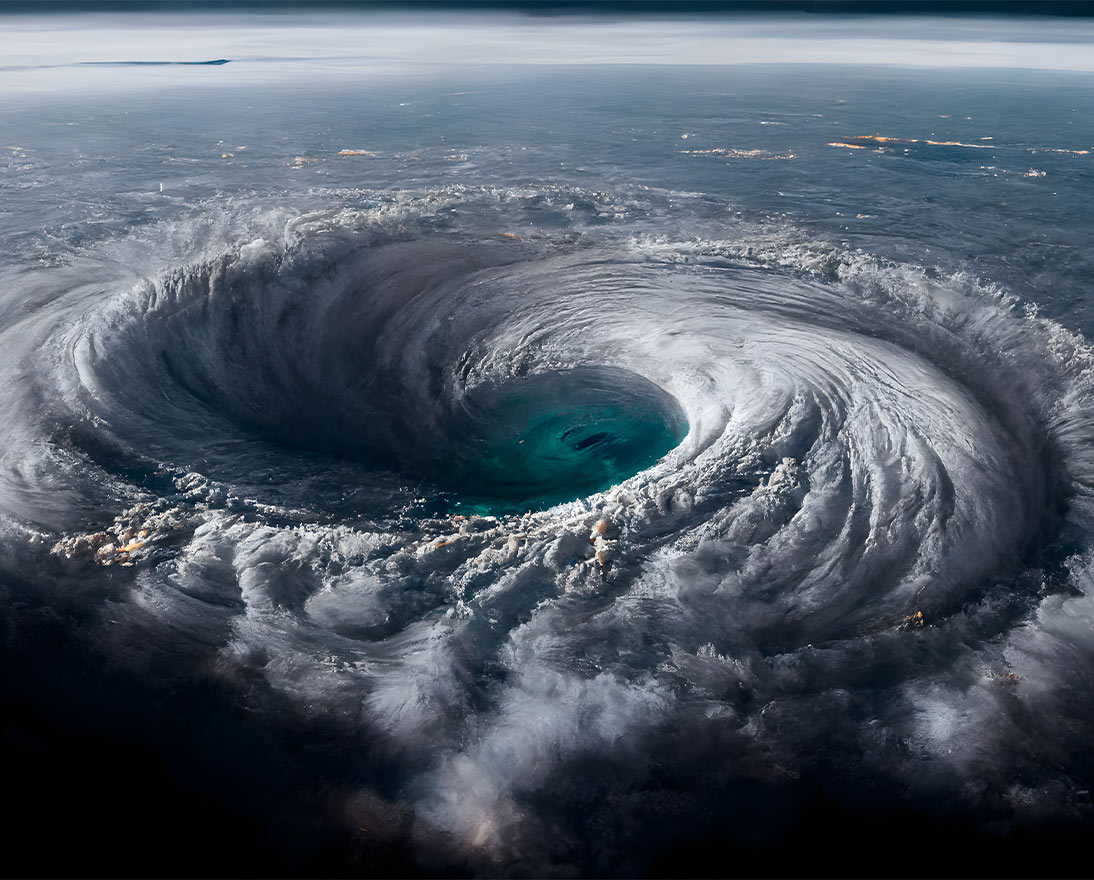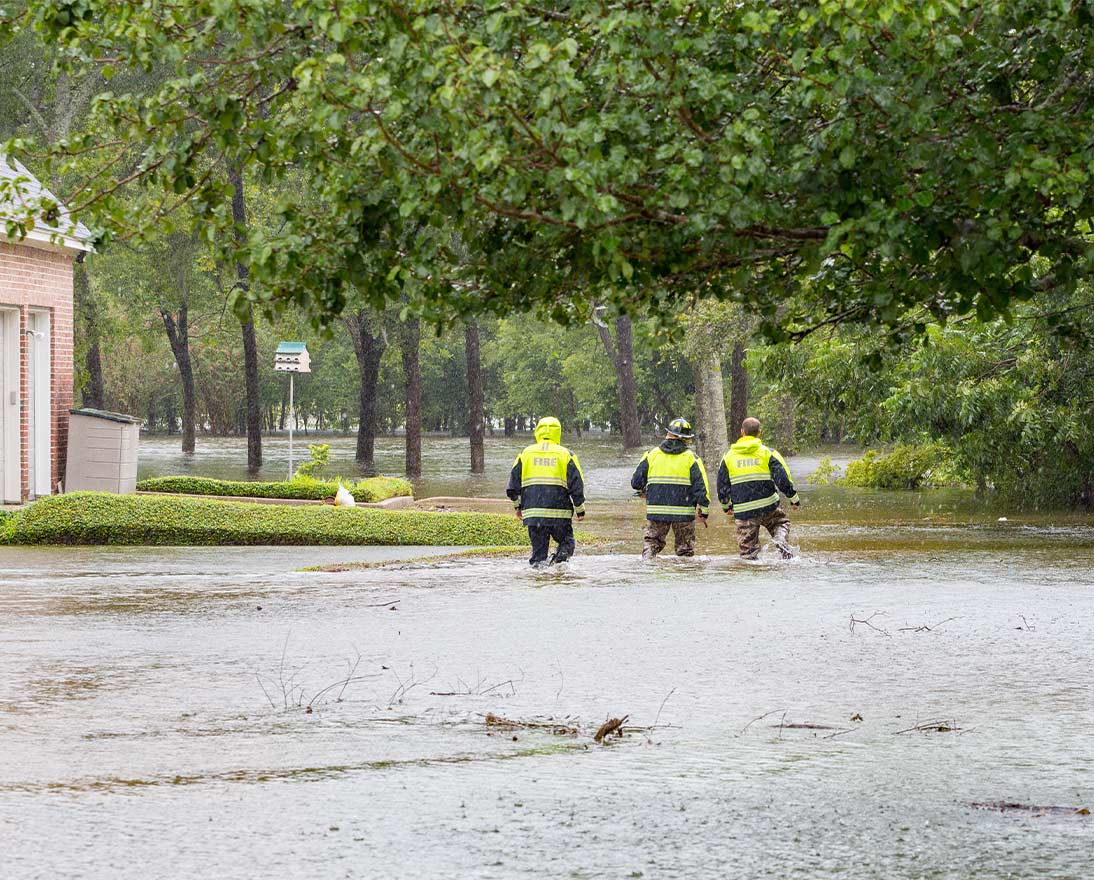Hurricane categories: what they tell us – and don’t tell us – about the dangers of an approaching storm
Natural hazardsArticleMay 3, 20246 min read
Hurricanes are categorized according to their wind speed. But this ignores other destructive elements in a hurricane’s arsenal. There are more dangers to consider. Learn more.
Throughout hurricane season, the media are likely to focus on one number: category strength. Since the 1970s, hurricanes have been measured on the five-point Saffir-Simpson scale, which categorizes hurricanes by wind speed.
But this could potentially be a costly mistake, says Iwan Stalder, Group Head of Accumulation Management at Zurich Insurance Group (Zurich).
“Category strength is not a reliable predictor of damage,” Stalder explains. “The scale excludes central pressure driving storm surge, rainfall and resulting inland flooding, the physical size of a storm, and other important factors.”
Stalder points to the 2018 hurricane season to highlight the limitations of the Saffir-Simpson scale. In October 2018, Hurricane Michael was measured as category 5 when it made landfall in Florida. Its strong winds and the rising seas it whipped up – known as storm surge – obliterated parts of the coast.
Yet a month earlier, Hurricane Florence caused comparable damage when it hit the coasts of North and South Carolina, but it was given a lower category 1 classification.
“The reason we see discrepancies between the category of a hurricane and the damage it causes is because wind speed is just one destructive element in a hurricane’s arsenal. The Saffir-Simpson scale does not capture this complexity,” explains Stalder.
“Category 4 and 5 hurricanes are terrifyingly destructive. But large, wet, slow tropical storms and category 1 hurricanes like Florence, which resulted in torrential rainfall and flooding, can be just as destructive and deadly.”
Four key factors
Mathias Graf, Zurich’s Head of Catastrophe Research & Development, explains that about 80 percent of the insurance industry’s losses incurred by Hurricane Michael were due to wind damage. Whereas wind was only responsible for around 20 percent of the damage caused by Hurricane Florence.
There were four key factors, explains Graf, that caused Hurricane Florence to cause so much damage despite its category 1 status:

- Size: Florence extended 80 miles (130 km) from the eye. This huge size meant it damaged a wide area of land and impacted a larger population of people than Michael.
- Surge: Florence’s size meant it impacted a larger expanse of coastline with the resulting storm surge causing more damage than the wind.
- Pace: Florence slowed to just 2-3 mph (3-5 kph) after making landfall allowing it to unload more rain, which caused greater inland flooding.
- Duration: Florence’s slow movement meant structures were battered and weakened by the wind for many days, even before the hurricane made landfall.
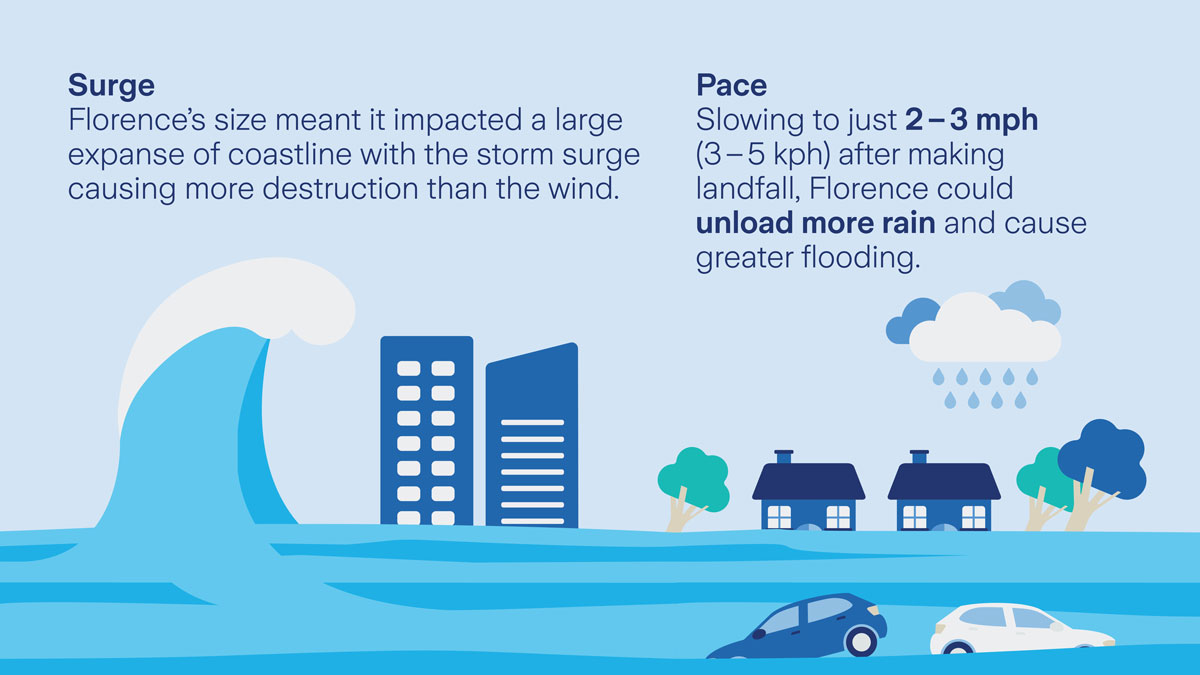
Other factors can also come into play, Graf explains, as happened when Hurricane Sandy hit New York in 2012. Sandy had slowed to a tropical cyclone when it landed on the U.S. East Coast, but it was still one of the most destructive storms on record due to unprecedented storm surge. This was due to a rare constellation of factors that included pressure, high tide and even the phase of the moon.
“Understanding the impact of a hurricane requires complex models,” Graf says. “We use inputs from at least seven companies and complement these with our own Zurich View of catastrophe modeling. These models are regularly updated as scientific research and insights derived from every new hurricane bring new findings.”
How to respond
So now that you understand the different ways that a hurricane can cause damage, what next? Prepare, says Connor Warfield, Climate Resilience Lead at Zurich Resilience Solutions, North America.
“Building resilience prior to a storm will save time and money in the long run,” Warfield says. “Conducting a full engineering analysis of your physical assets and business continuity plan will identify where you are exposed to the threat of a hurricane from wind, flood and coastal storm surge.”
Blair Carter, Senior Risk Engineering Consultant and regional specialist for Zurich Resilience Solutions, explains that businesses need to understand the key loss drivers, vulnerabilities and potential business impacts. Equipped with this knowledge, Carter says, allows a business to make informed decisions about how to prepare and respond to a hurricane.
Using the four key factors from Hurricane Florence as an example, Carter says that business need to address the following factors:
Size: Considering the potential regional impact, have you prepared and gathered necessary supplies? Can you cope with limited local emergency response assistance? If not, have you completed the necessary tasks to ensure all properties are protected prior to evacuation? Do you have a response plan (e.g., remediating contractors) once the storm has passed?
Surge: Storm surge can affect inland locations more than most people realize. Could your facility be in reach of potential storm surge? Can you fortify the facility exterior to limit internal damage? Can high value stock or machinery be relocated off the ground or to a different location?
Pace: A slowing storm can lead to significant rainfall accumulation. Have you performed a water drainage system review? Are the roof drains/gutters (including secondary/overflow systems) in good condition and clear of debris? Are ground level culverts and drainpipes clear of debris and vegetation? Could water enter the facility due to ponding or surface water runoff?
Duration: An extended storm will expose a facility’s weaknesses. Have you inspected the building envelope for potential failure modes? Is the perimeter flashing well secured? Are window seals/caulking in good condition? Is the rooftop equipment adequately secured?
“A thorough and well executed severe weather emergency response plan can have a significant impact on reducing property damage and business interruption,” Carter says. “By creating a Windstorm Emergency Response Plan, our customers are better prepared to respond and recover when faced with a challenging event. By routinely updating the plan, potential vulnerabilities can be quantified and mitigated appropriately.”
Hurricanes are complex natural hazards that require more than just a wind speed categorization to enable you to plan for their impact. Be informed and be prepared.
Climate Resilience
Our Climate Resilience experts help you identify and manage climate risks, and prepare you for climate reporting.
